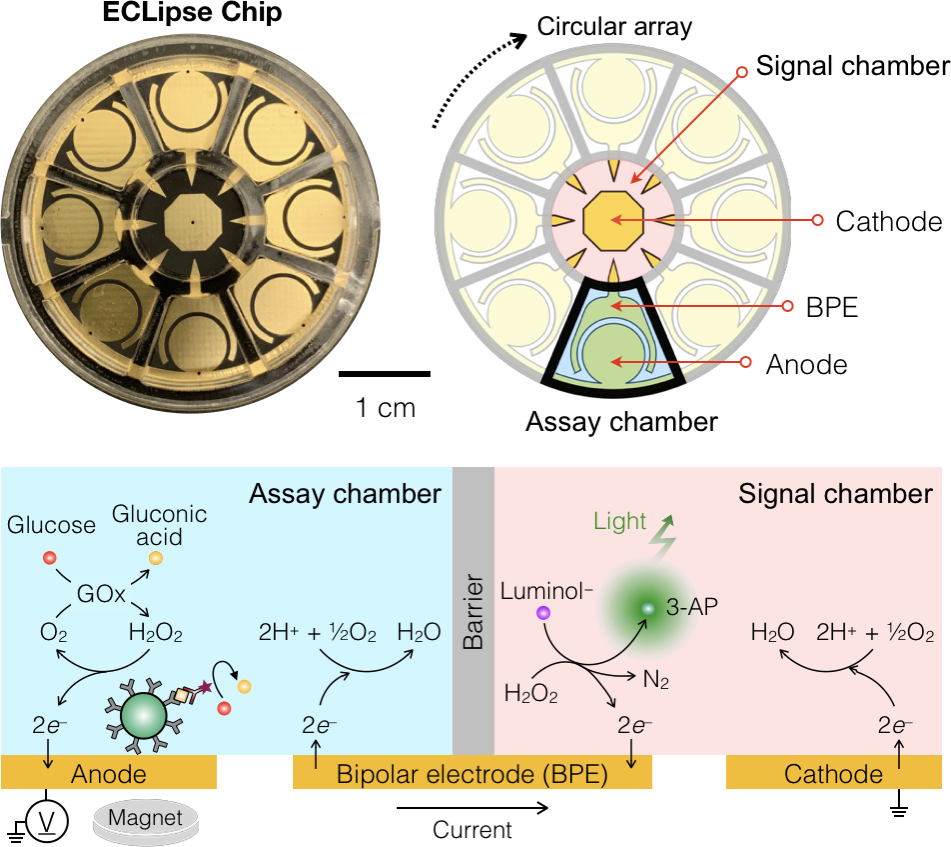Electrical engineering to boost electrochemiluminescence
Applying voltage to luminescent molecules can trigger light-generating chemical reactions. This process, called electrochemiluminescence (ECL), is a powerful biosensing modality. ECL assays can achieve exquisite sensitivity with little optical background, sync the reaction timing to generate a consistent analytical signal, and afford measurement setups simpler than fluorescent or electrochemical detection. However, most ECL assays are built around the same format as ELISA or chemiluminescence assays: biorecognition and light generation occurs in one reaction chamber. Although straightforward, this one-pot scheme carries the risk of cross-reactions among reagents, limits assay optimization, and underutilizes ECL’s electrical controllability.
In a recent study, CSB investigators advanced a new ECL configuration, termed ECLipse (ECL in paired signal electrodes). In ECLipse, bioassays are separated from ECL generation – these two reactions take place in isolated chambers that are only connected through an electrode. This bold concept allowed the investigators to i) independently optimize each reaction type (i.e., target recognition, signal generation), ii) engineer electrodes for maximal sensitivity, and lay out a compact array for high throughput. The developed prototype system achieved superior sensitivity (>7000-fold better than ELISA) and could measure eight different targets within an hour.
The investigators demonstrated ECLipse’s clinical uses by analyzing patient plasma samples. The ECLipse assay accurately identified sepsis by measuring multiple host factors (i.e., IL-3, IL-6, PCT). The pilot study also reaffirmed the emerging recognition of IL-3 as a predictor of septic shock and death. In patients with SARS-CoV-2 infection, the ECLipse assay revealed distinct IL-3 and IL-6 patterns. These outcomes, combined with ECLipse’s speed (<1 hour for assay) and affordability ($1.5 USD for a chip), point to ECLipse’s potential as a new, ultrasensitive tool for point-of-care diagnostics. This work has been published in Science Advances.
